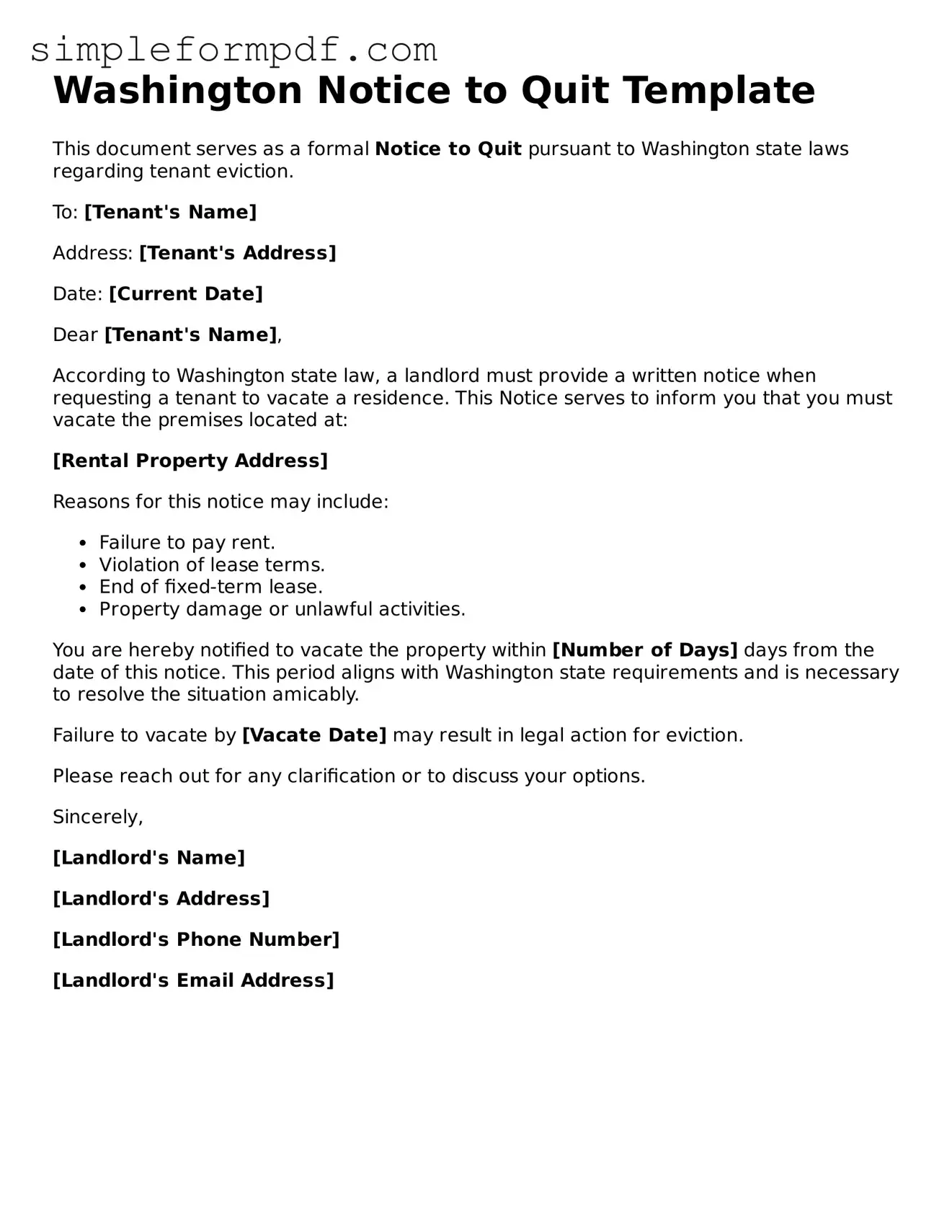Free Notice to Quit Form for the State of Washington
The Washington Notice to Quit form is a legal document used by landlords to formally request that a tenant vacate a rental property. This notice outlines the reasons for eviction and provides the tenant with a specified timeframe to leave. Understanding this form is crucial for both landlords and tenants to ensure compliance with state laws.
Take the first step in the eviction process by filling out the Notice to Quit form. Click the button below to get started.
Launch Editor
